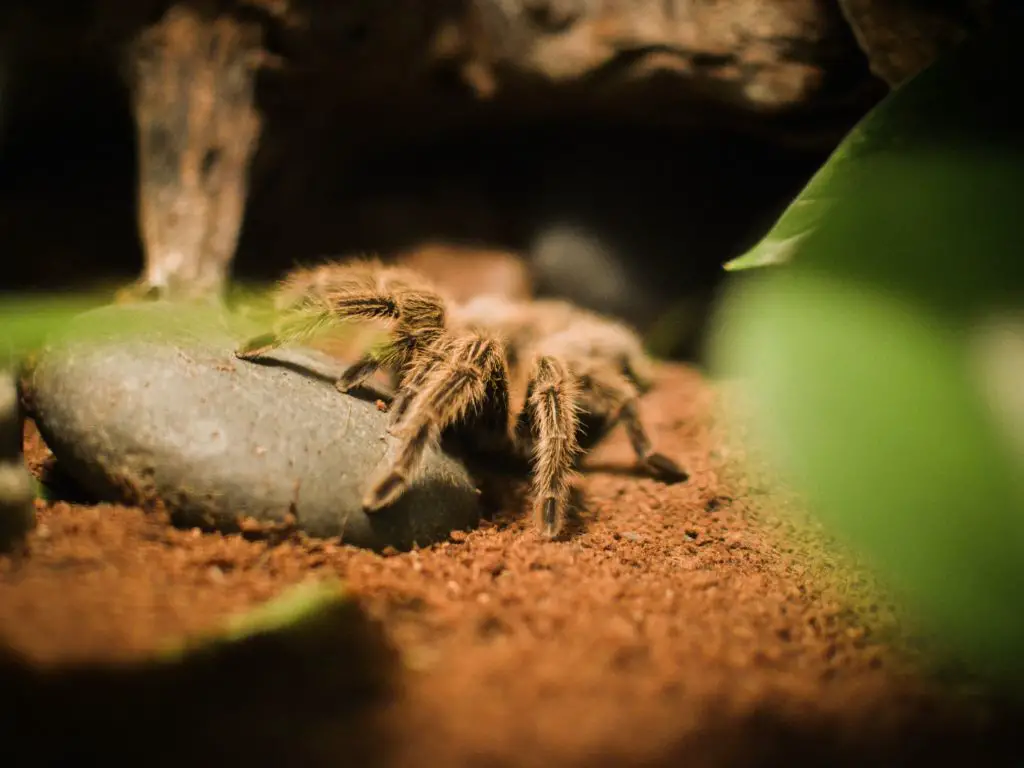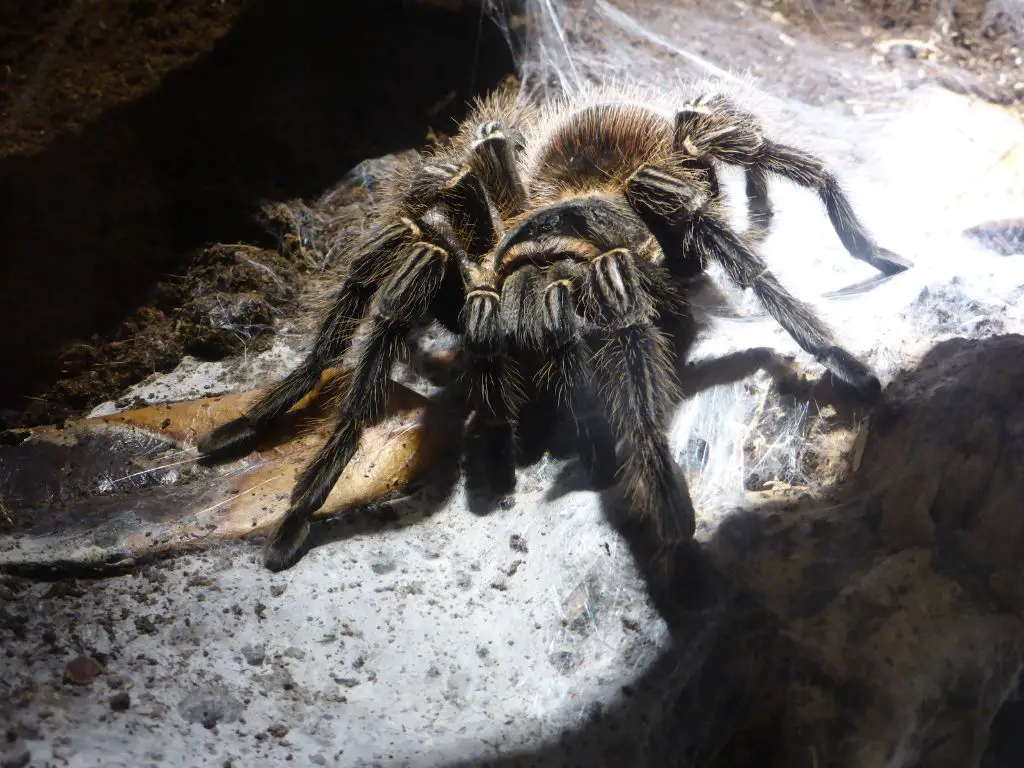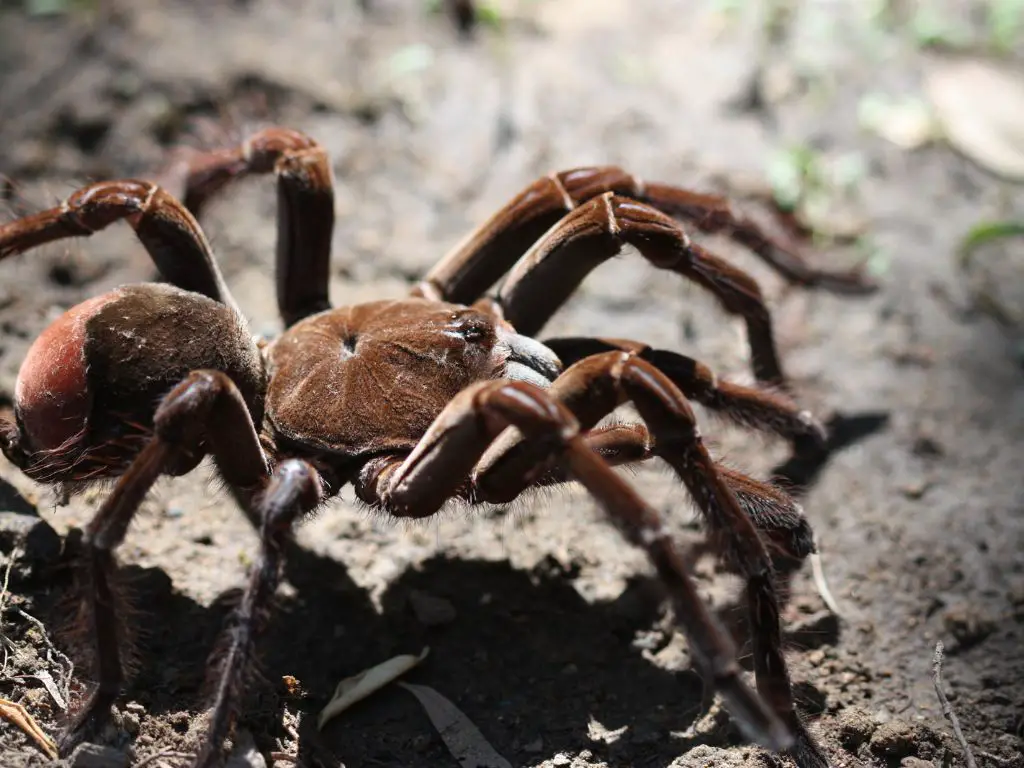Arachnophobia, or the fear of spiders, is one of the most common phobias in the world. However, spiders are also fascinating creatures, and the biggest spider in the world is especially intriguing. In this blog post, we’ll explore the biggest spider in the world, its habitat, feeding habits, and potential danger to humans. We’ll also discuss why conservation efforts are crucial for protecting this fascinating species.
The biggest spider in the world
What is the biggest spider in the world?
The biggest spider in the world is the Goliath bird-eating spider (Theraphosa blondi), which is native to the rainforests of South America. The female Goliath bird-eating spider can grow up to 30 centimeters (12 inches) in leg span and can weigh over 170 grams (6 ounces), making it one of the largest spiders in the world. The male Goliath bird-eating spider is significantly smaller, with a leg span of around 12 centimeters (5 inches).
Despite its name, the Goliath bird-eating spider does not primarily eat birds. Instead, it feeds on a variety of prey, including insects, small mammals, and reptiles. Its diet also includes frogs, snakes, and even bats. The spider uses its powerful jaws and fangs to inject venom into its prey, which immobilizes and kills them. Once the prey is dead, the spider uses its fangs to tear it apart and suck out the liquefied insides.
Goliath bird-eating spiders have several unique characteristics that distinguish them from other spiders. They have powerful legs that allow them to burrow into the ground, and their hairy bodies provide excellent camouflage in their rainforest habitat. Additionally, they have tiny claws on the end of their legs, which help them climb trees and other vertical surfaces.
While the Goliath bird-eating spider may seem intimidating, it’s important to note that it is not aggressive towards humans and will typically only attack if it feels threatened or cornered.
Where does the biggest spider in the world live?
The Goliath bird-eating spider is found in the rainforests of South America, including Brazil, Venezuela, and Suriname. These spiders prefer moist environments and are often found near rivers or in areas with high humidity levels. They typically burrow underground to create their homes, which can be as deep as 30 centimeters (12 inches) and lined with silk.
Goliath bird-eating spiders are primarily found in the Amazon rainforest, which is the largest rainforest in the world and covers a vast area of South America. The Amazon rainforest is known for its high biodiversity, with millions of species of plants, animals, and insects living in its various ecosystems.
The Goliath bird-eating spider plays an essential role in the rainforest ecosystem by controlling populations of insects and other small animals. As an apex predator, the spider helps maintain a balance between predator and prey populations, ensuring the survival of many species.
The rainforests of South America are under threat due to deforestation, climate change, and other human activities. As a result, the habitat of the Goliath bird-eating spider and many other species is shrinking, which puts their survival at risk. Efforts to protect and conserve rainforests and their biodiversity are crucial for ensuring the survival of the Goliath bird-eating spider and many other species that call the rainforest home.
How does the biggest spider in the world hunt and eat?
The Goliath bird-eating spider is a nocturnal predator and primarily hunts at night. It uses its keen sense of smell to locate prey, which it can detect from several meters away. Once it has located its prey, the spider will ambush it by leaping forward and grabbing it with its powerful legs.
The spider’s fangs are large and strong, allowing it to deliver a potent venom that immobilizes its prey. The venom also contains digestive enzymes that liquefy the internal organs of the prey, making it easier for the spider to suck out the nutrients.
Goliath bird-eating spiders are known to feed on a variety of prey, including insects, small mammals, and reptiles. They have even been known to eat bats, which they catch by hanging upside down from the roof of caves and snatching them in mid-air.
After the spider has killed its prey, it uses its fangs to tear it apart and suck out the liquefied insides. Goliath bird-eating spiders are capable of consuming prey that is up to twice their own size, and they can go several weeks without eating if necessary.
While the Goliath bird-eating spider may seem like a fearsome predator, it’s important to note that it typically avoids confrontation with humans and will only attack if it feels threatened or cornered. If you encounter a Goliath bird-eating spider, it’s best to leave it alone and give it plenty of space to move away.
The biggest spider in the world vs other spiders
The biggest spider in the world, the Goliath bird-eating spider, is a remarkable creature that fascinates scientists and enthusiasts alike. However, how does it compare to other spider species in terms of size, behavior, and characteristics? Let’s take a closer look.
Size Comparison
While the Goliath bird-eating spider is certainly impressive in size, it’s not the only large spider out there. The Huntsman spider, for example, can have a leg span of up to 12 inches, while the Brazilian wandering spider has a body length of up to 2.5 inches. However, the Goliath bird-eating spider is still considered to be the largest spider in the world by mass, with females weighing up to 6.2 ounces.
Behavior Comparison
In terms of behavior, the Goliath bird-eating spider is known for its aggressive nature and impressive hunting skills. However, it’s not the only spider species with these characteristics. The Australian funnel-web spider, for example, is also known for its aggressive behavior and venomous bite. The black widow spider, on the other hand, is notorious for its deadly venom and its tendency to cannibalize males after mating.
Characteristic Comparison
When it comes to unique characteristics, the Goliath bird-eating spider is known for its impressive strength and powerful jaws, which allow it to crush the exoskeletons of its prey. The jumping spider, on the other hand, is known for its exceptional eyesight and ability to jump up to 50 times its own body length. The orb-weaving spider is known for its intricate web-building skills, while the wolf spider is known for its excellent hunting abilities and maternal instincts.
Mythology and Cultural Significance of the Goliath Bird-Eating Spider
As one of the largest and most intimidating spiders in the world, the Goliath bird-eating spider has captured the imagination of people around the globe. Throughout history, this spider has played a significant role in the mythology and folklore of many cultures.
In some indigenous South American cultures, the Goliath bird-eating spider is revered as a symbol of strength and power. It is sometimes depicted in artwork and mythology as a spirit guide or protector. In other cultures, however, the spider is seen as a fearsome and dangerous creature, to be avoided at all costs.
In contemporary popular culture, the Goliath bird-eating spider has made appearances in various forms of media, including books, films, and video games. It is often portrayed as a monster or villain, adding to its reputation as a fearsome creature.
However, it’s important to note that many of the myths and legends surrounding the Goliath bird-eating spider are based on misconceptions and exaggerations. For example, while the spider is certainly capable of preying on birds, it does not actively seek them out and rarely poses a threat to humans.
Are the biggest spiders in the world dangerous?
The Goliath bird-eating spider being the largest spider in the world, many people may wonder if this massive arachnid poses a threat to humans and other animals.
Despite its intimidating size, the Goliath bird-eating spider is generally not aggressive towards humans and will only bite as a last resort, such as when it feels threatened or cornered. Furthermore, the venom of this spider is not particularly potent for humans, and while a bite may be painful, it is not typically life-threatening. Most people will recover fully without the need for medical treatment.
Some individuals may be more sensitive to spider venom than others, and in rare cases, a bite from a Goliath bird-eating spider may cause an allergic reaction that can be more severe and require medical attention.
When it comes to other animals, the Goliath bird-eating spider preys on a variety of animals, including birds, lizards, and small mammals. However, it is not typically a danger to larger animals such as humans or larger mammals.
The Goliath bird-eating spider may be a massive and intimidating creature, it is generally not a significant threat to humans or other animals. It is essential to treat these creatures with respect and caution while appreciating their vital role in the natural world.
Conservation efforts
Conservation efforts for the biggest spider in the world are vital to ensure the survival of these unique and fascinating creatures. Several initiatives are currently underway to protect them from habitat loss, climate change, and other threats.
Habitat loss
Habitat loss is a significant threat to many species of spiders, including the biggest spiders in the world. Deforestation, urbanization, and agricultural activities all contribute to the loss of spider habitat. Efforts are underway to protect and preserve natural habitats where these spiders can thrive. Conservation organizations are working with local communities and governments to establish protected areas and wildlife reserves to safeguard spider habitats.
Climate change
Climate change is also a major concern for spider conservation. The warming of the planet is causing shifts in weather patterns, which can have a profound impact on spider populations. Conservation efforts are underway to monitor spider populations and identify areas where spiders are most vulnerable to climate change. Scientists are working to develop strategies to mitigate the effects of climate change on spider populations, such as by creating artificial habitats or facilitating the movement of spiders to areas where they are more likely to thrive.
Illegal pet trade
Another threat to spider populations is the illegal pet trade. The Goliath bird-eating spider, in particular, is highly sought after as a pet, which has led to a decline in wild populations. Conservation organizations are working to educate the public about the importance of protecting wild spider populations and promoting responsible pet ownership.
Points to Remember
The Goliath bird-eating spider is the largest spider in the world, and while it may seem intimidating, it is generally not a significant threat to humans or other animals. This spider plays a crucial role in the natural world by controlling insect populations and serving as prey for larger predators. To appreciate and protect the Goliath bird-eating spider, we can support conservation efforts that protect natural habitats, educate the public about responsible pet ownership, and encourage scientific research to better understand spider behavior and ecology. Through these efforts, we can ensure the continued survival of this remarkable creature for future generations.









Leave a Reply